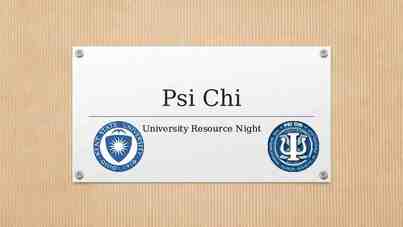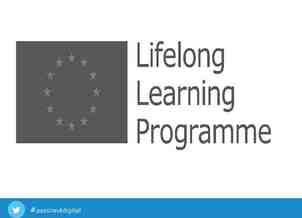Massachusetts General Hospital Anticoagulation Management Service Lynn
37 Slides4.92 MB
Massachusetts General Hospital Anticoagulation Management Service Lynn B. Oertel, MS, ANP, CACP Clinical Nurse Specialist Presented November 4, 2008
Timeline of ATU/AMS
2008 NPSG (selected) 1 - Improve accuracy of patient identification 2 - Improve the effectiveness of communication among caregivers 3 - Improve safety of using medications Requirement 3E: Reduce the likelihood of patient harm associated with the use of anticoagulation therapy New http://www.jointcommission.org/
2008 NPSG (selected) 8 - Accurately and completely reconcile medications across the continuum of care 9 - Reduce the risk of patient harm resulting from falls 13 - Encourage patients’ active involvement in their own care as a patient safety strategy 15 - The organization identifies safety risks inherent in its patient population
NQF Safety Standards Safe Practice 17: Evaluate each patient upon admission, and regularly thereafter, for the risk of developing DVT/VTE. Utilize clinically appropriate methods to prevent DVT/VTE. Safe Practice 18: Utilize dedicated antithrombotic (anticoagulation) services that facilitate coordinated care management. http://www.qualityforum.org/
Goal is to reduce incidence of surgical complications nationwide by 25% by 2010 SCIP VTE1 – Surgery patients with recommended VTE prophylaxis ordered SCIP VTE2 – Surgery patients who received VTE prophylaxis within 24 hours after surgery www.qualitynet.org, see Other Resource: About the Project
OSG Call to Action – Sept 15, 2008 http://www.surgeongeneral.gov/
The Joint Commission Sentinel Alert – Sept 24, 2008 http://www.jointcommission.org/SentinelEvents/ SentinelEventAlert/
Clinic overview Patients 4100 Mean age 69 yrs, SD 13.65, range 20 - 100 Common indications for treatment: AF 57% VTE 15% Heart Valves 9% INR intensity ranges 2 – 3 87% 2.5 – 3.5 9% By request, selected others Admissions: 75/month Reactivated patients 60% new referrals from inpatient (POE Consult referral) Discharges: 90/month
Time in Therapeutic Range INR Range 2 - 3 percent TTR 71 70 69 68 Jan Feb mar Apr May June percent 69.1 68.8 69.3 69.3 70.2 69.7 INRs 7206 6423 6634 7150 6973 6864 7400 7200 7000 6800 6600 6400 6200 6000 # INRs percent TTR 65 60 55 Jan Feb mar Apr May June percent 64.4 62.5 63.7 59.6 59.4 58.8 INRs 902 834 847 914 877 867 920 900 880 860 840 820 800 780 # INRs INR Range 2.5 - 3.5 TTR calculated using Rosendaal method Strict range limits, eg. 2 – 3 and 2.5 – 3.5 Using ALL INR data (induction, interruptions, etc)
Percent INR tests out-of-range In Range (2 – 3) 60% Above 3 15% Below 2 25% Percent Very High 5 0.8% 7.5 0.2% Percent Very Low 1.3 0.3%
Communication and Education for Patients and Physicians
Key elements for improved patient management Patient focused, primary nurse model Physician Order Entry for AMS Consult Referral (nearly all data fields mandatory for submission, thus all critical info received) Dawn AC 3 Interfaces: (patient management system for maintenance and transition patients) ADT Interface (electronic notification for AMS patient admissions/discharges) Outbound message Interface (AMS icon/communication facilitator) Results Interface (electronic INR entry into Dawn AC from lab system) Hospital “buy in” Information System support (2 FTEs) Pharmacy support (AMS Discharge Rx)
AMS Communication with Patients One-time face-to-face educational visit with patient & family and primary nurse Followed by telephone calls to patient for short period to review subsequent INR values, current dose instructions, and date of next INR Thereafter, written instructions are mailed with same information. Dose info communicated via # pills – not mg. (finalizing plans to initiate email communications, when desired by patient) Telephone assessments more common than face-toface visits Communication interventions are individualized to meet patient needs over time
Patient Satisfaction “My ranking of this program: First Class Service.” “The anti-coag service is great. I go to Florida 3 months during the winter months and I am able to keep track of dosages and INR levels easily. My daughter calls in for me and lets me know if there are any changes in dosage to be made.” “I have nothing but praise and appreciation for the concern and care over the years.” “Knowing your clinic keeps a very close check on my Coumadin levels gives me a sense of security. Your reporting is prompt and directions clearly stated.”
Nursing Implications for Anticoagulated Patients Achieving good outcomes is dependent Knowledge of patient risk v. benefit of upon: treatment Safe and quality care management Know goal therapeutic INR range and treatment plan. Utilize systematic, standardized protocols and decision support tools. Monitoring Tracking and patient follow-up Effective communication and coordination of multiple care providers Patient & Family Education, include health literacy assessment, modification of risks, standardize curriculum & education materials
AMS Patient Education Slide Show Standardized education curriculum content, individualized for patient-specific needs
Written materials support content of slide show AMS Brochure
Patient Education To prepare for discharge, can patient Identify signs and symptoms of VTE (or bleeding) Describe action to take if occurs Identify ‘warfarin manager’ Recite instructions for follow-up including: daily dose schedule, confirmation of pill size, date of next INR Describe plans for blood testing and future monitoring Describe management and disposal of medications, especially sharps disposal per town regulations
Dose Instruction Letter 1. INR result and Target Range 2. Reminder of pill size 3. New weekly dose instructions (repeat schedule until next dose letter arrives) 4. Date for next INR test
Dose Instruction with skip If INR is high may see a message to skip 1 or 2 days (patients generally rec’d a phone call at the time) Then, follow weekly dose instruction here
Compliance Process Automated follow-up support by Dawn AC, details developed by AMS Five Stages – a letter mailed to patients at each stage underscoring safety concerns Formal discharge letter sent with delivery confirmation Collaboration with referring physicians (possibly case management) at critical milestones Emailed formal notices at Final and Discharge Stages Customized letters/emails in Dawn AC Highly efficient Batch printed or emailed Excellent documentation trail
NonCompliance Process DNA Stage I 2 3 Final Discharge Notice INR rescheduled in if no INR 3 DAYS after scheduled date, then next INR in . 2 weeks if no INR 1 DAY after scheduled date, then next INR in 1 week if no INR 1 DAY after scheduled date, then next INR in MD Email 1 week if no INR 1 DAY after scheduled date, then next INR in 1 week sent via Certified Mail Patient Discharged (DNA Did Not Attend) RN Reminder
Reminder Letter for missed INR date Dedicated line for calls This information needed or email same information Autoreschedule of INR Date
AMS Icon Indicates patient is an active patient in AMS Appears on electronic medical records (1 in-patient, 2 out-patient systems) Click on icon, new window displays critical data elements about the patient from AMS database
AMS icon CAS, LMR and OnCall Phase II AMS Icon COMING NOVEMBER 7
CPOE Consult Referral Creates an electronic referral to AMS Efficient, user-friendly, fast turn around Ensures key clinical information provided since most fields mandatory
AMS Consult Referral
AMS Consult Referral
Outpatient Paper AMS Referral
Transition Pathway Services Induction Pathways New Start – Warfarin Only New Start – Warfarin with LMWH New Start – Warfarin with Fondaparinux Bridging Pathways Resume – Warfarin Only Resume – Warfarin with LMWH Resume – Warfarin with Fondaparinux
Communication Strategies Transition Pathways Floor by floor roll-out Multi-disciplinary approach (medicine, nursing, pharmacy, case management, target key leaders): Grand rounds Inservice education sessions Print materials (newsletters) Main Corridor events Electronic resources POE CAS alerts All user (select user group) Broadcast email messages Web page presence with multi-source access to key anticoag-specific documents via hyperlinks
Role Group Responsibilities AMS Nurse Referring Physician Complete referral Order baseline lab work Submit AMS Rx Floor Nurse Obtain patient weight Conduct medication discharge teaching Completes discharge process and ensures patient leaves hospital with meds and instructions Reviews/confirms eligibility and seeks clarification, as needed “Meets and Greets” patient Written instructions for pt. Assumes anticoag management day after discharge Pharmacy Delivers AMS Rx to floor Case Management/ VNAs May/may not be involved Coordinates needs/services at home
E-Z Guide
Resources Your Guide to Coumadin/Warfarin Therapy – Agency for Healthcare Research and Quality, http://www.ahrq.gov/consumer/coumadin.htm Important information to know when you are taking: Coumadin and Vitamin K http://ods.od.nih.gov/factsheets/cc/coumadin1.pdf Are you at risk for a DVT Blood Clot http://www.preventdvt.org/ OSG Call to Action, Sept 15, 2008 http://www.surgeongeneral.gov/ The Joint Commission Sentinel Alert, Sept 24, 2008 http://www.jointcommission.org/SentinelEvents/Sen tinelEventAlert/ Nursing Model for Anticoagulation Service – http://innovativecaremodels.com/
Conclusion Collaborative communication strategies across disciplines are needed to support and reinforce the patient’s treatment plan. Patient education about prevention, disease process and treatment is vital for successful outcomes. Detailed written reinforcements are critical elements.










































